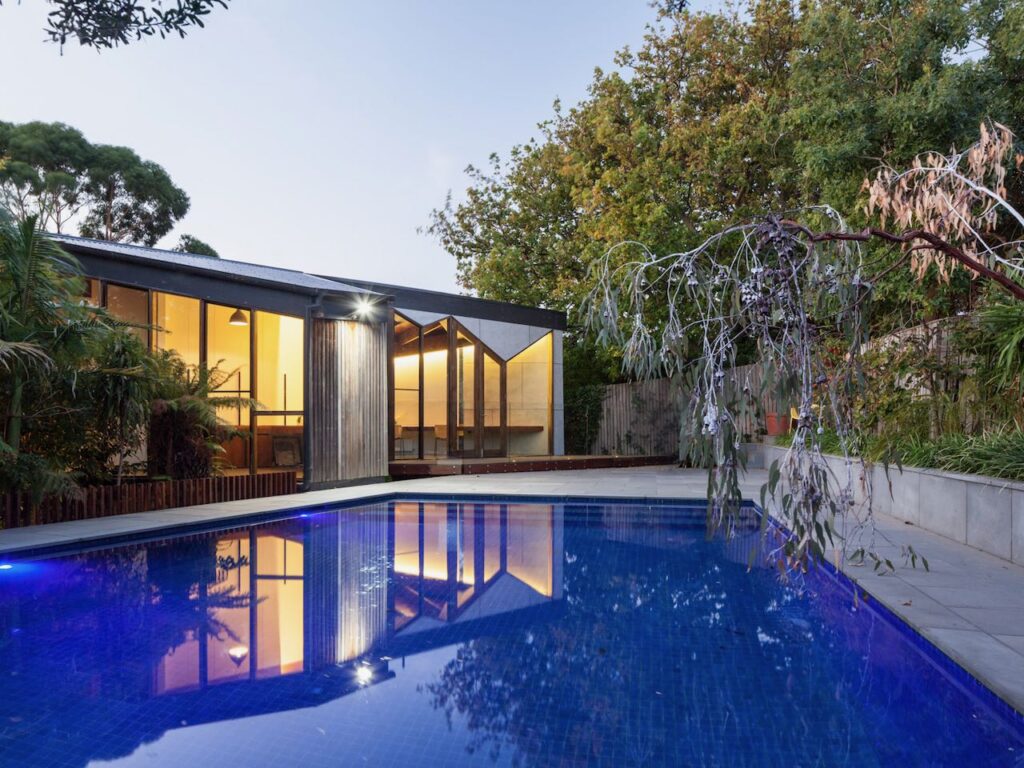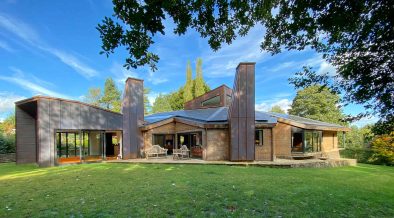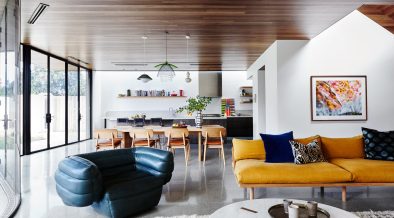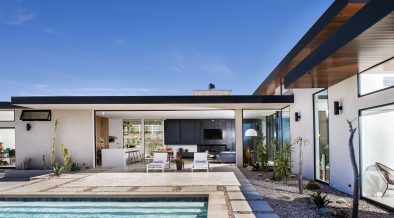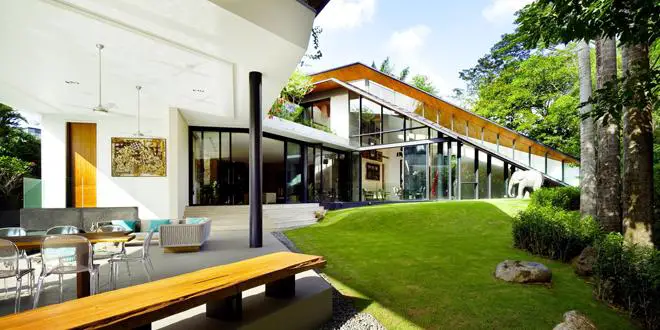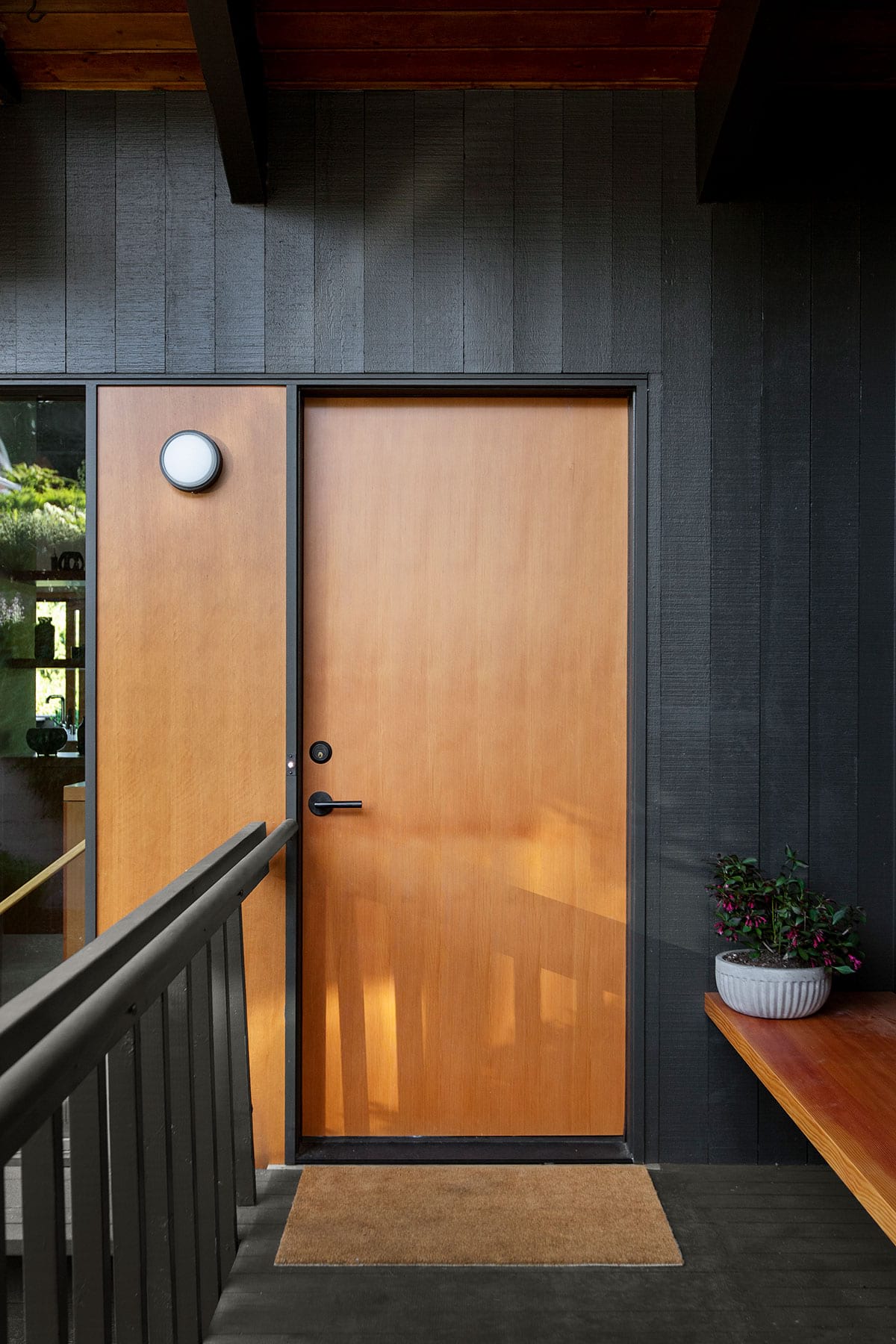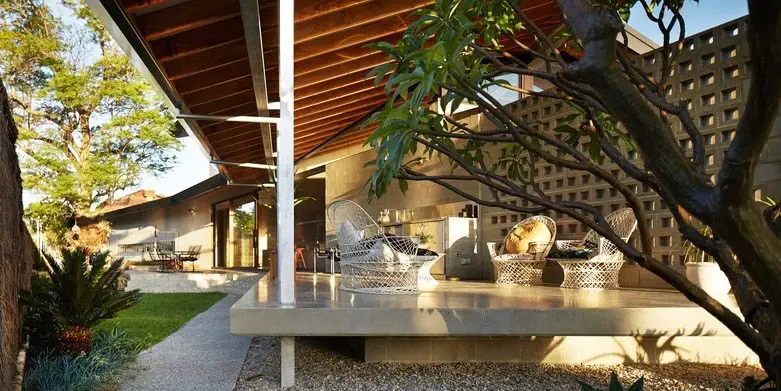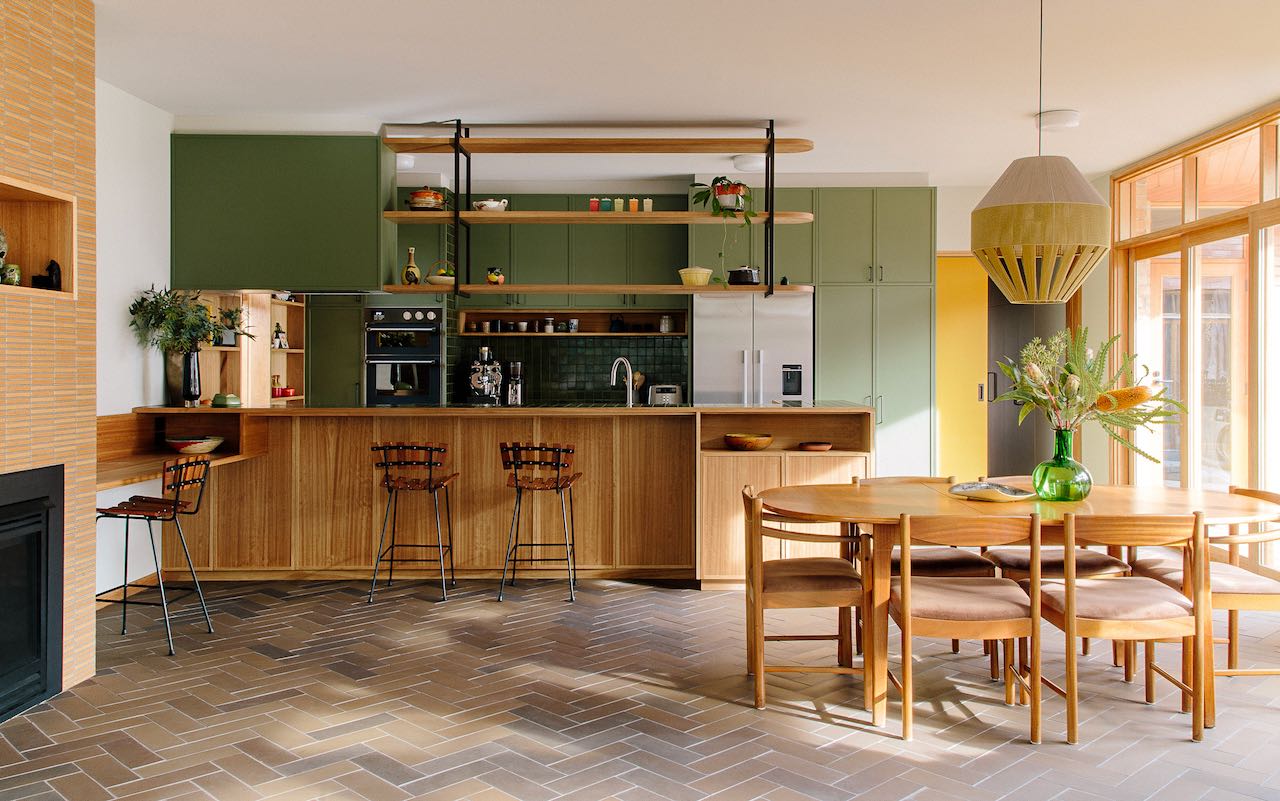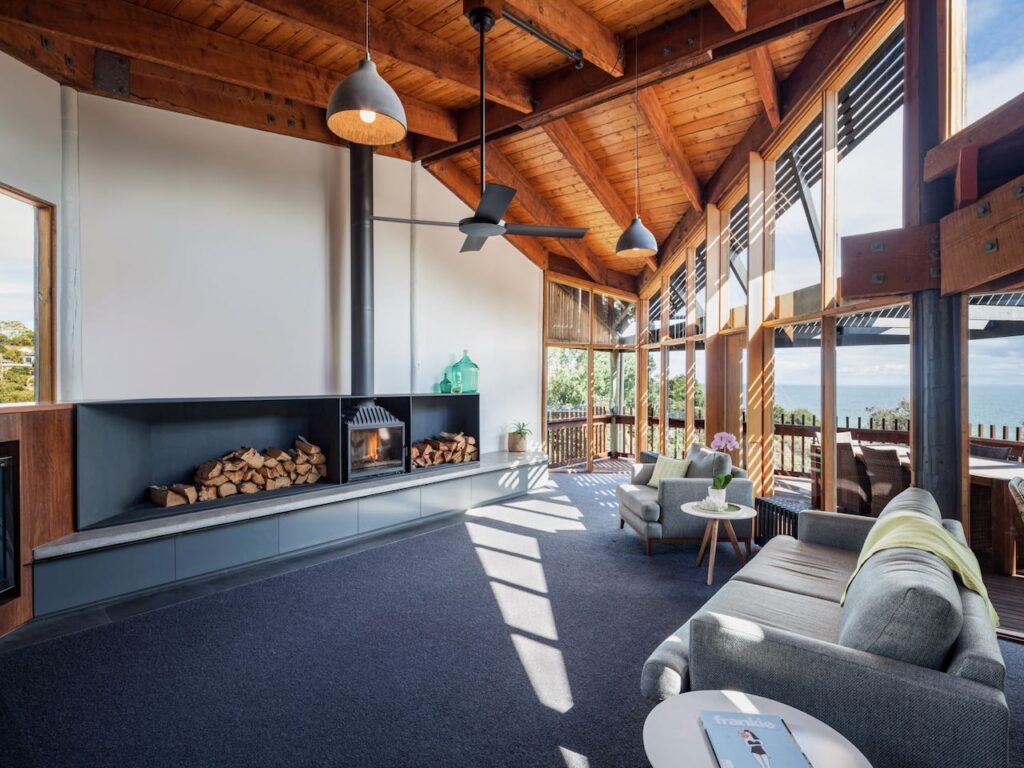
Text by Mihaly Slocombe Chamfer House revisits a post and beam dwelling designed in 1977 by Kevin Borland, the Hildebrand House. It sits within an established garden on Oliver’s Hill, a crucible of late modernism overlooking Port Phillip Bay.
Our clients approached us soon after moving in. They wanted to protect the timber ceilings, exposed Oregon structure and finger jointed window frames they loved, while also updating the house to suit their young family.
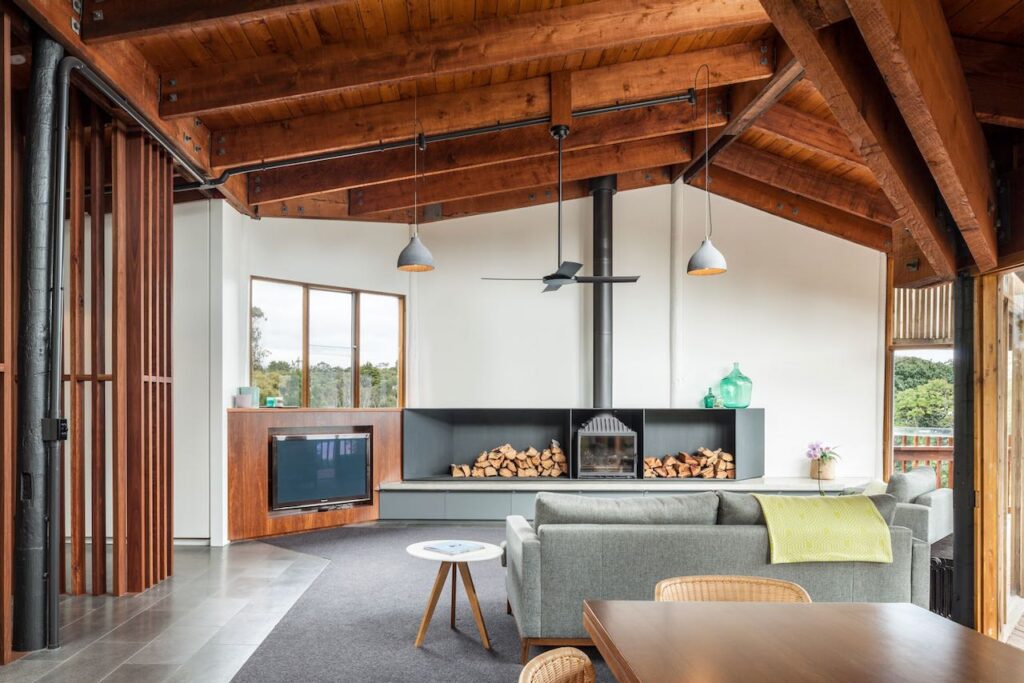
Our intervention assumed a strategy of sensitive infiltration. We touched every room, some more heavily than others, yet retained the house’s core personality: the romantic rationalism that characterised much of Borland’s later work.
We unkinked the plan, pulled back a touch on the 1970s psychedelics, and reconfigured the living and sleeping areas to better connect with the garden.
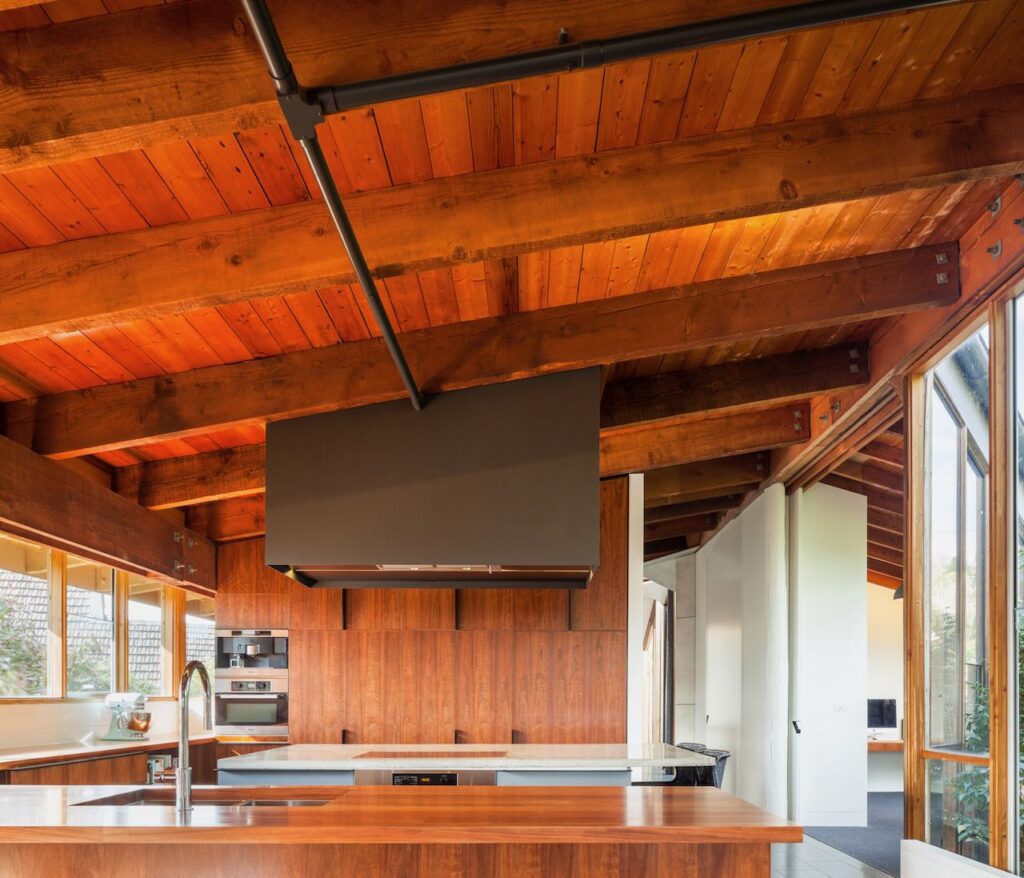
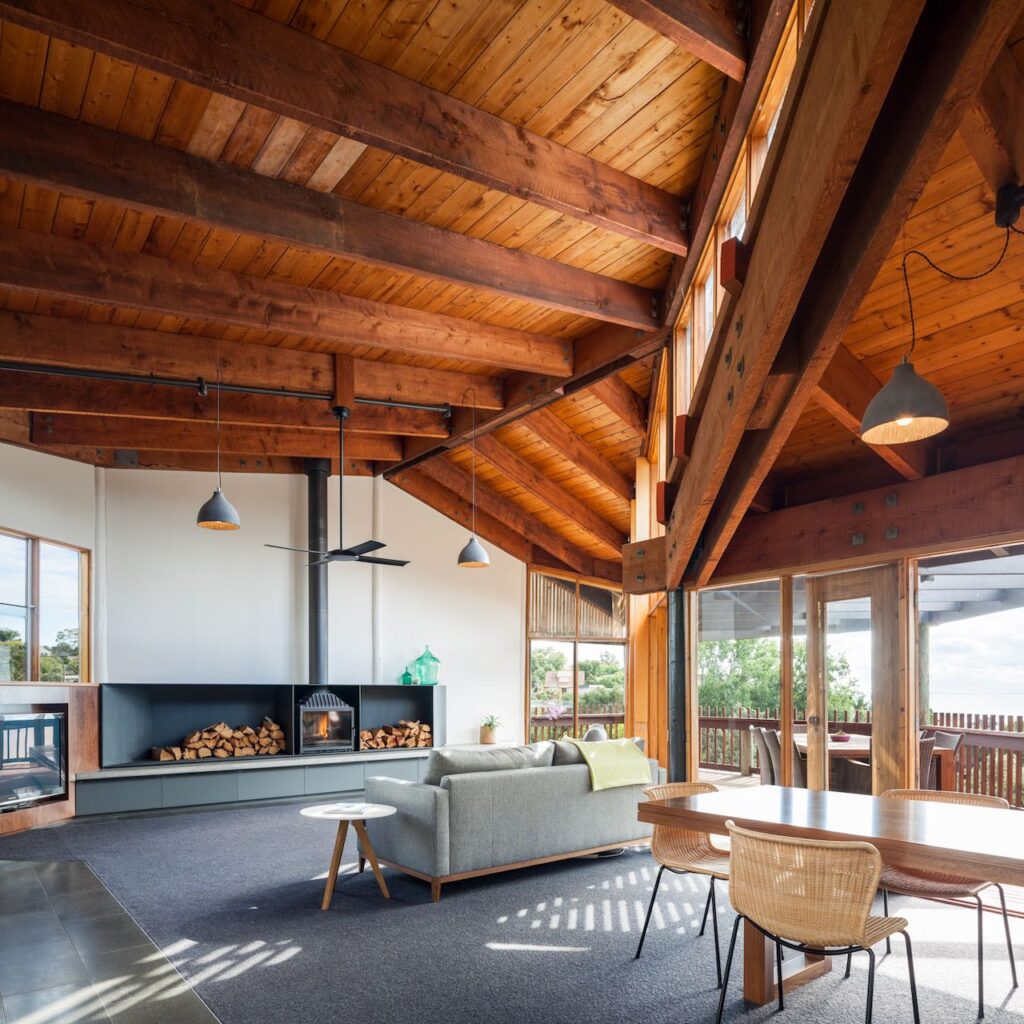
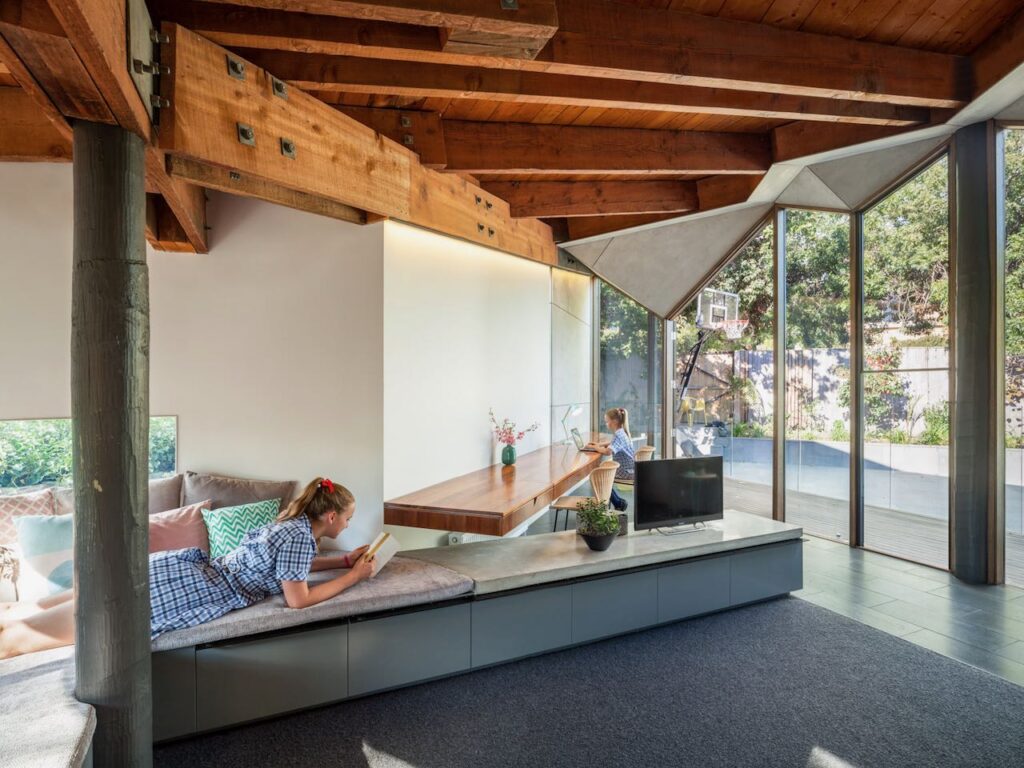
In his monograph on Borland, Doug Evans notes that his “mature domestic style combines absolute structural rationality with materials and detailing of great romantic warmth and informality.”
We sought to build on this juxtaposition, layering a rational spatial sequence with an exploded interpretation of the chamfer. A device used regularly by Borland and on Hildebrand.
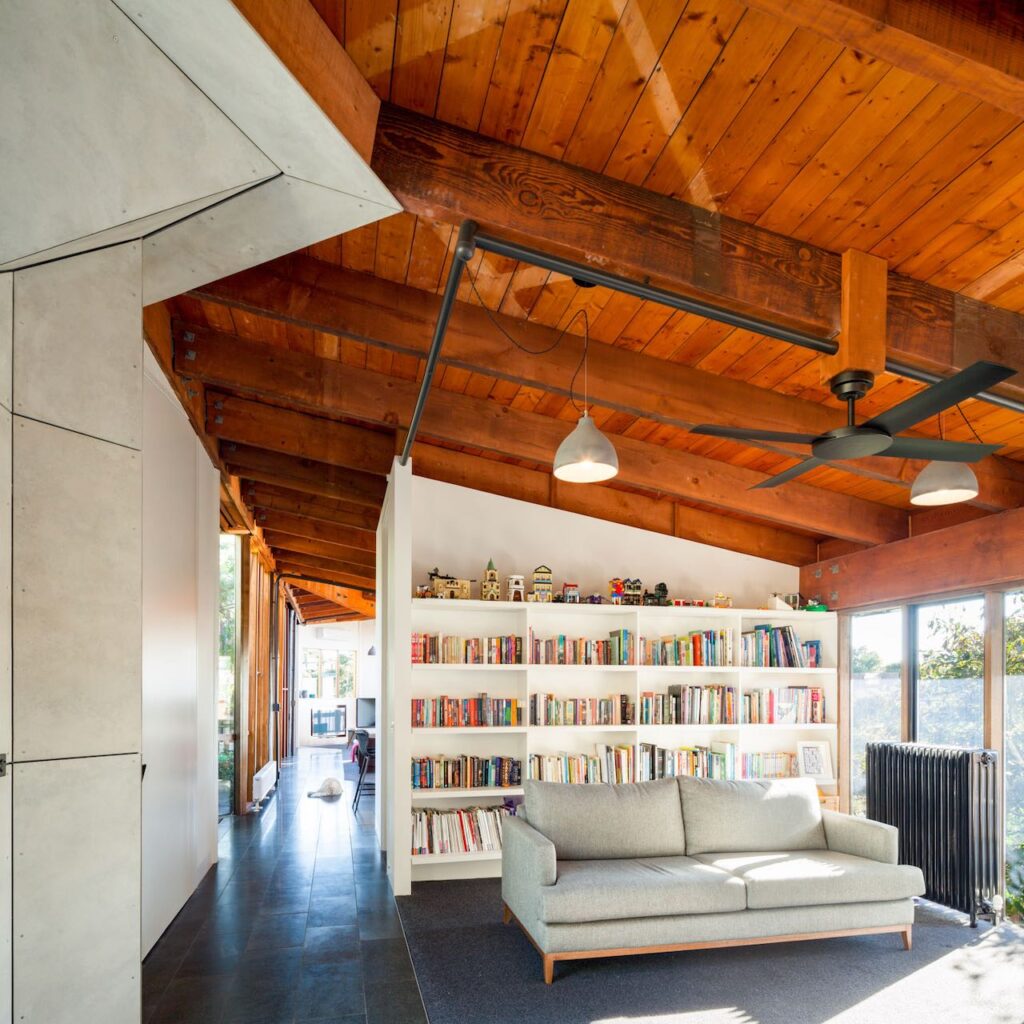
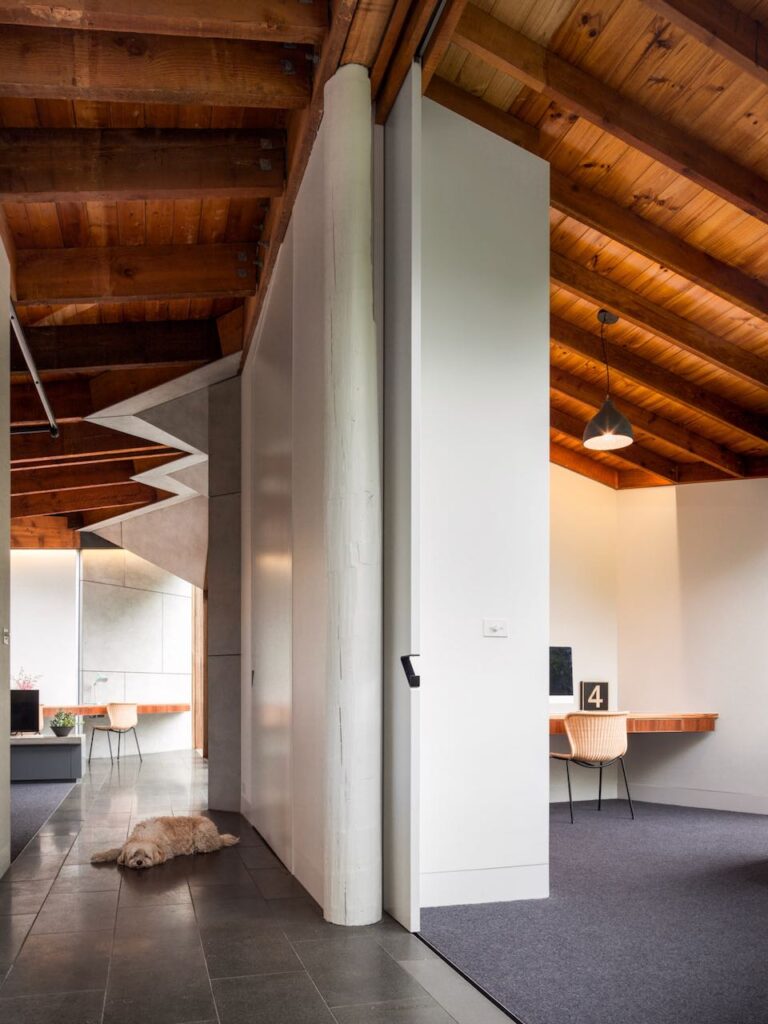
House only in plan, we developed it into a three dimensional form that operates from the macro scale to the micro. The faceted balcony soffit framing the view from the master bedroom is one example, as are the repetitive triangular motifs in our customised joinery hardware.
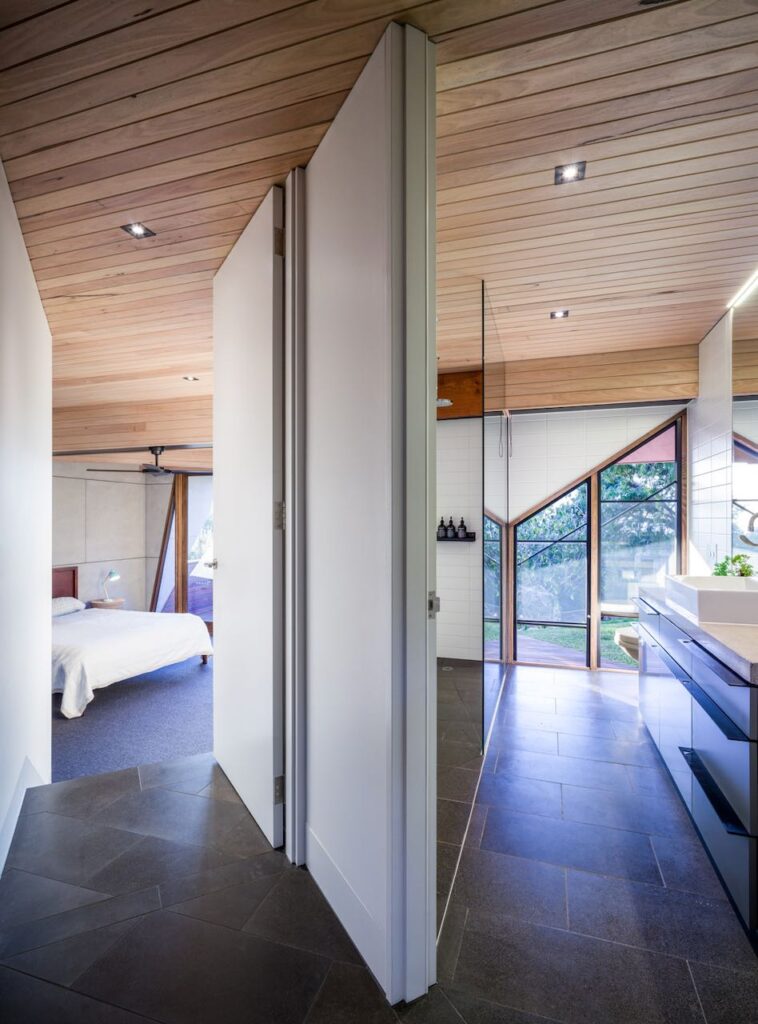
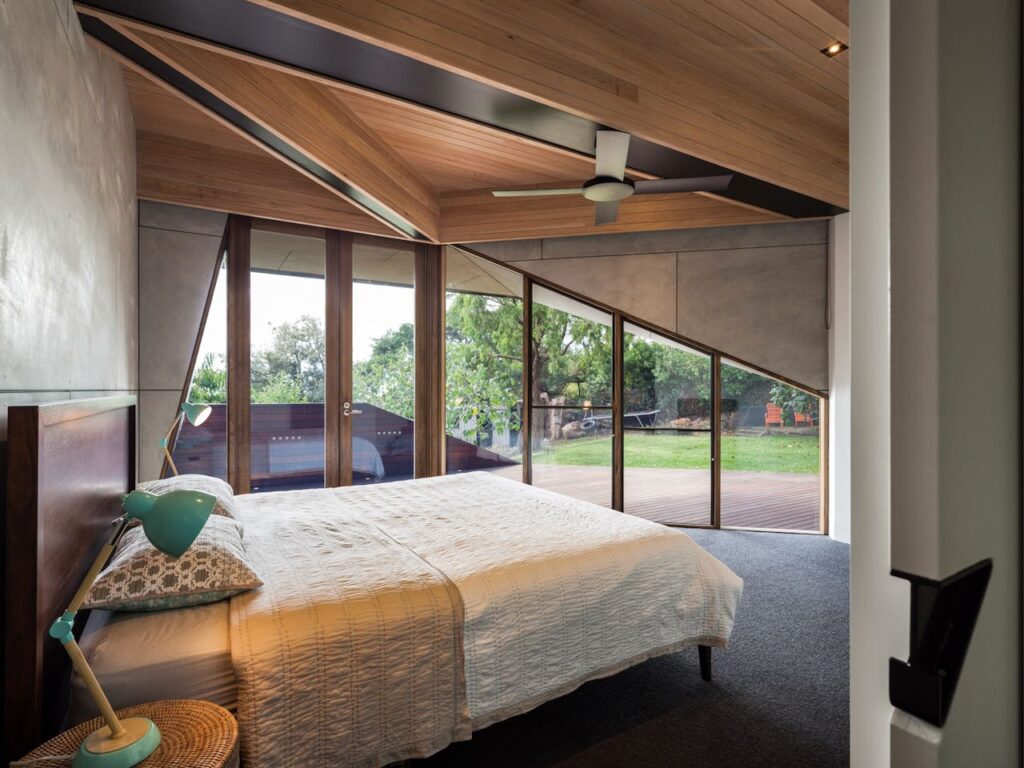
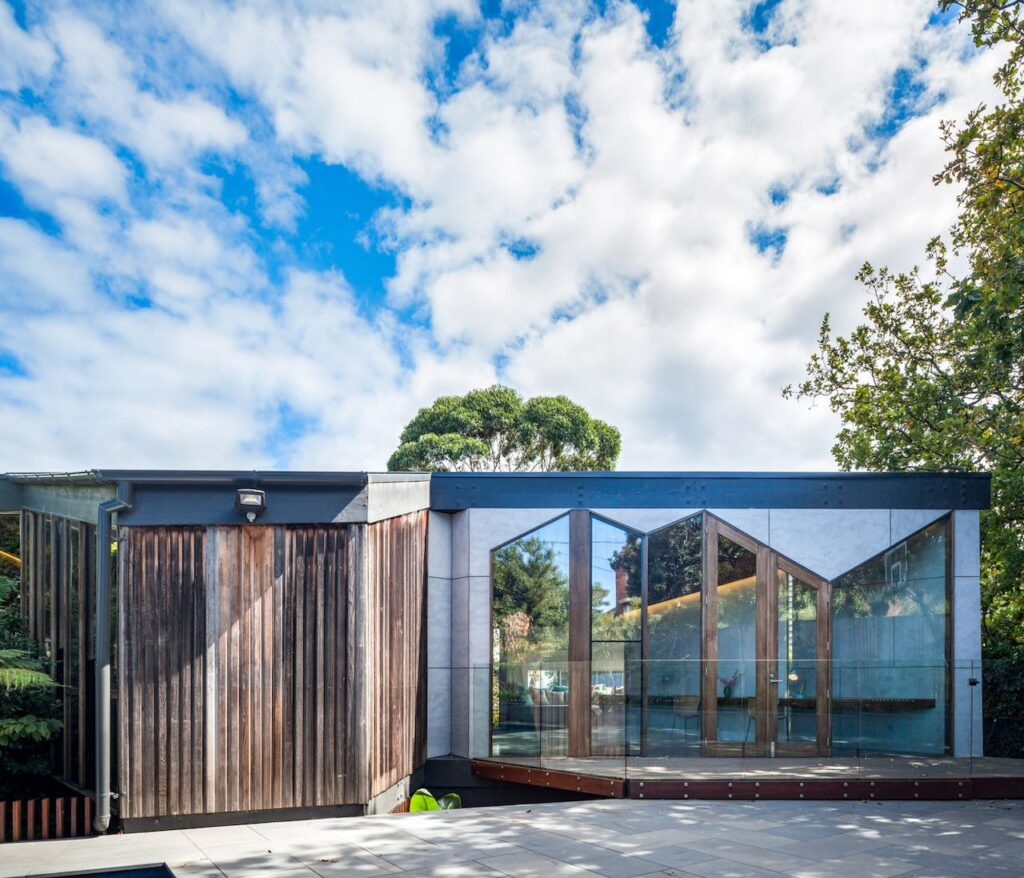
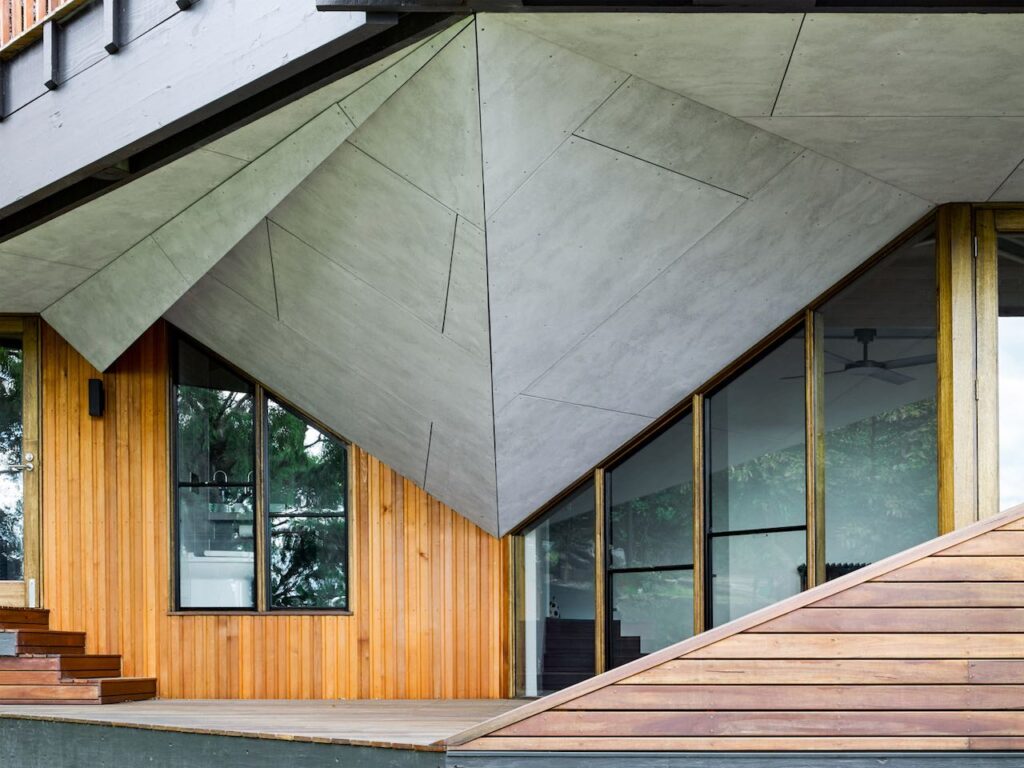
Chamfer House adheres strictly to the 5 x 5m grid of the original. The trimming and extending of corners deliberately interrupt the grid, but are very much a part of its pattern. Family life radiates from the kitchen, which straddles a full grid segment at the heart of the house.
Our clients’ children have made the second living room their own, occupying a triangular bookend every afternoon for homework before LEGO and play.
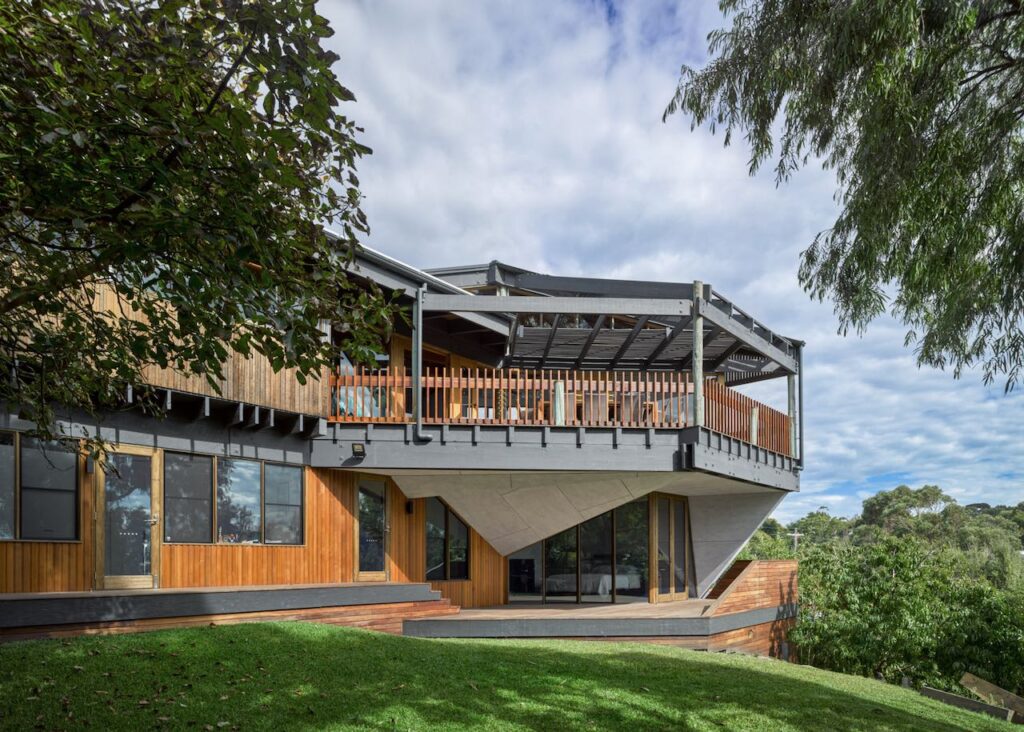
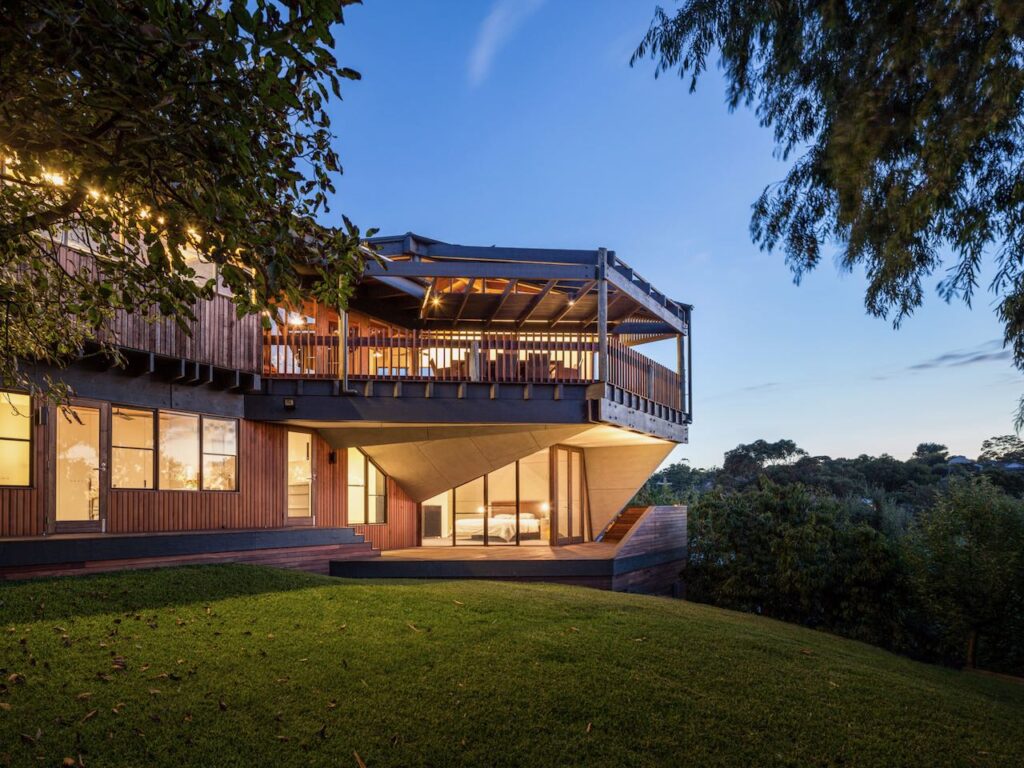
These moments are an extension of the deep humanity of Borland’s work: the plan is aligned to the view, the sun and the garden; rooms are sized to suit the dimensions of living; triangular pockets provide looseness and intimacy.
